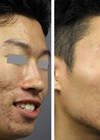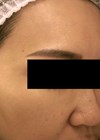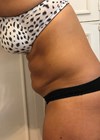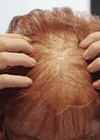Following patient demand for eyebrow tail elevation inspired by the ‘Foxy eye’ trend, we have developed this protocol using the Fotona VectorLift technique with hyperstacking of Smooth Mode pulses, to produce a non-invasive enhancement of periocular aesthetics for patients who may benefit from the rejuvenation and elevation of these structures.
Preparation
The procedure is performed under topical aneasthesia (lidocaine 15% + benzocaine 15% + Procaine 15%), which is applied to the face 20 minutes prior to treatment and covered with an occlusive film for enhanced penetration. Anaesthetic cream is not required in the scalp area.
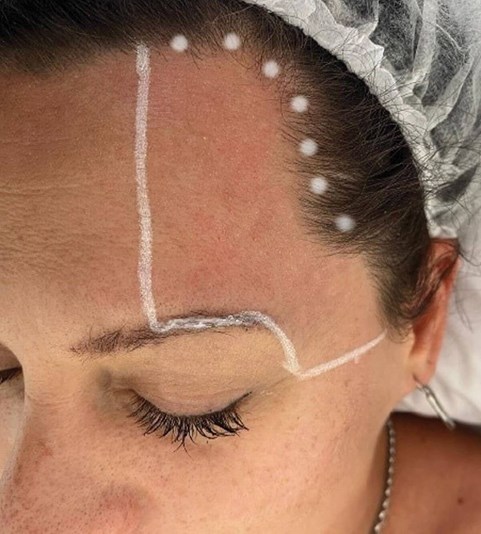
Figure 1: Treatment area marking.
Before the laser procedure is started, markings with white pencil are performed to assist the laser operator with a treatment plan. Lines are drawn as in Figure 1, extending a vertical line that starts at the forehead hairline and ends above the eyebrow using the mid pupillary centre as a reference. The line follows the contour above the eyebrow until it meets the horizontal line of the upper part of the ear (Figure 1). Individual spots are marked 6mm apart on the hair line of the parietal area, which will serve as guiding points to manually open hair channels to treat the scalp (Figure 1).
The procedure
The first treatment step will use the Er:YAG laser with a fast brushing technique applied at 6.25 J/cm2, 7mm spot and 3.3Hz in Smooth mode, applied on the previously marked forehead area until 500 to 700 pulses have been reached. This is followed by step two which is applied on the scalp using the same laser by creating straight channels of split hairs set at the white markings. This provides an optimal tightening of the frontalis that contributes to enhanced and durable results. To optimise heat penetration a Smooth mode hyperstacking of 10 pulses is applied using stamping at low fluences of 2.5-3.0 J/cm2 with a 7mm spot. These progressive heating pulses provide a safe and effective way to treat the scalp with no risk to hair integrity. To improve the aesthetic result, a final step is performed over the upper eyelid using the same hyperstacking and stamping technique mentioned in step 2, but with a smaller 5mm spot and corneal eyeshield protection. Noticeable results are perceived right after the first session. Patients are scheduled for three or four sessions every three weeks. This protocol is non-aggressive and allows patients to return immediately to their normal routines.
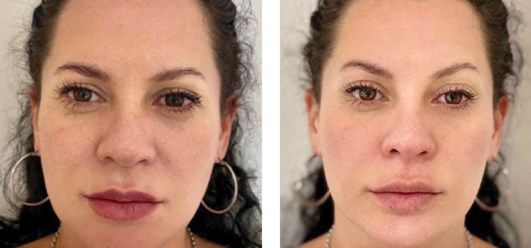
Figure 2: Before and after two treatments.
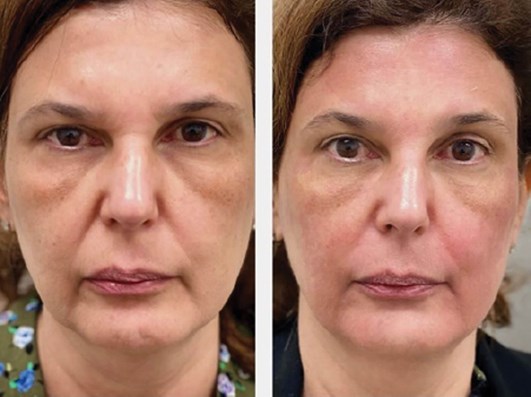
Figure 3: Before and after one session of combined VectorLift and 4D.
Aftercare
We follow the treatment with a topical hydration gel containing hyaluronic acid and vitamin C, administered three times a day for three days. Also, sun-protection is recommended for a week. Hydration gel can be applied at night with a combination of hyaluronic acid and retinol. To maximise patient satisfaction, it is important to establish proper skin hydration levels prior to treatment, since dry skin is not conducive to significant tightening and elevation results.
This protocol includes the improvement of upper eyelid laxity and skin texture, providing a more integral rejuvenation and optimal treatment outcome. For more total facial improvements this protocol can also be combined with 4D protocols, Liplase lip enhancement or platelet rich plasma (PRP) application. Although polydioxanone (PDO) threads have been successfully used to achieve similar results, patients are more inclined to opt for a non-invasive, no down-time option.
Declaration of competing interests: The author has received honorarium and reimbursement for speaking at conferences about laser treatments and for taking part in educational workshops worldwide by Fotona.
COMMENTS ARE WELCOME



